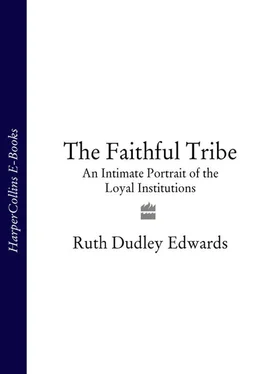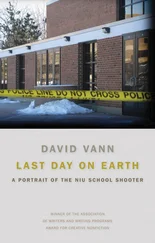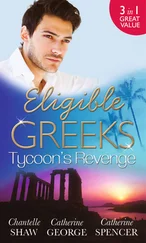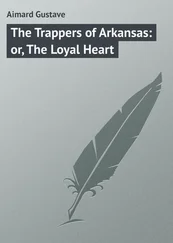It was around that time that the public servant Maurice Hayes, though Catholic a fan of the Twelfth,
began to sense from Catholics in other areas that they saw the marching as a threat, a means of putting them in their place, of letting them know who was boss and that they were in a minority in a society ruled by Protestants and they had better know it and behave themselves. There was annoyance too at the sheer number of marches which kept people in houses, blocked roads, business interfered with, and the further aggravation of party tunes and some ‘kick-the-pope’ bands which insisted on playing more loudly when passing churches or chapels and the menacing beat of the Lambeg drums.
I wondered to myself why people wanted to march at all, and why others who were annoyed could not just pull down the blinds and refuse to be annoyed?
Hayes’s hope for the future is that of all sane people in Northern Ireland: that Orangemen will make more effort to explain themselves to their neighbours and that Catholics will try to understand that Orangeism is a celebration of civil and religious liberty. ‘We should be able to hold on to and to encourage the exercise of a tradition which is not only important to many people, and therefore to the rest of us, but which could add to the colour and meaning of life for all.’
It will be necessary, too, for both sides to deal with the thugs that do awful things in their name.
*With the exception of William Bingham, George Chittick and Worshipful Master Charlton, whom I interviewed, and Neil Jarman, Elaine McClure and John Moulden, who appeared on a radio programme, the quotes from everyone else named in this chapter come from their contributions to The Twelfth: What It Means to Me (ed. Gordon Lucy and Elaine McClure).
* Giving children pretend collarettes or lending them proper ones is common. Although Orangemen take their regalia seriously, they do not give it mystical status. I was watching a parade one day when I was summoned into it by Chris McGimpsey, who removed his bowler, placed it on my head and said: ‘That’s a thank you for taking the trouble to find out about us.’ I wore it slightly uneasily, afraid of giving offence, but when I consulted the Worshipful Master of my unofficial lodge he explained that no one would mind. Further, he told me that if I wanted a collarette as a souvenir, he would provide me with one. He duly sent one to me along with a miniature of Bushmills to toast it with.
A loyal band of Orangemen from Ulster’s lovely land,
They could not march upon the Twelfth – processions were all banned,
So they flew off to the Middle East this dreadful law to dodge
And they founded in Jerusalem the Arab Orange Lodge.
Big Ali Bey who charmed the snakes he was the first recruit
John James McKeag from Portglenone taught him to play the flute
And as the oul’ Pied Piper was once followed by the rats
There followed Ali from the lodge ten snakes in bowler hats.
They made a martial picture as they marched along the shore
It stirred the blood when Ali played “The Fez my Father Wore’.
And Yussef Ben Mohammad hit the ‘Lambeg’ such a bash
He scared the living daylights from a camel in a sash.
Now the movement spread both far and wide – there were lodges by the score
The ‘Jerusalem Purple Heroes’ was the first of many more
The ‘Loyal Sons of Djeddah’ and ‘The Mecca Shining Star’
And the ‘Rising Sons of Jericho’ who came by motor car.
The banners too were wonderful and some would make you smile
King Billy on his camel as he splashed across the Nile
But the Tyre and Sidon Temperance had the best one of them all
For they had a lovely picture of Damascus Orange Hall.
The Apprentice boys of Amman marched beneath the blazing sun
The Royal Black Preceptory were Negroes every one
And lodges came from Egypt, from the Abu Simbel Falls
And they shouted ‘No Surrender’ and ‘We’ll guard old Cairo’s walls’.
But when the ban was lifted and the lodges marched at last
The Arabs all decided to march right through Belfast
And they caused a lot of trouble before they got afloat
For they could not get their camels on the bloody Heysham boat.
Now camels choked up Liverpool and camels blocked Stranraer
And the Sheikh of Abu Dhabi came in a bloody great big car
But the ‘Easter Magic’ LOL they worked a crafty move
They used their magic carpets and flew in to Aldergrove.
When they came to Castle Junction where once stood the wee Kiosk
They dug up Royal Avenue to build a giant mosque
And Devlin says to Gerry Fitt, * ‘I think we’d better go,
There’s half a million camels coming down from Sandy Row.’
The speeches at the ‘field’ that day were really something new
For some were made in Arabic and some were in Hebrew
But just as Colonel Gaddafi got up to sing ‘The Queen’
I woke up in my bed at home and found it was a dream.
‘The Arab Orange Lodge’ (Sung to the air: ‘The Wearing of the Green’)
‘THERE’S A BOND THAT ties us together – something that folk have never fully understood,’ said Martin Smyth, who in his time as Imperial Grand Master and Imperial Grand President has travelled to all parts of Orangedom. ‘One could go to any part of the world and find a relationship immediately. Oh, yes, like any other family, they’ll be cantankerous; there’ll be folk you might love, but you couldn’t like. But it’s a family of nations and it’s fascinating.’
In 1997, the Irish Grand Lodge invited me to the social functions of the Triennial Imperial Council of the World † which, luckily for me, was that year meeting in Northern Ireland. Established in 1867, the Council has met thirty-nine times at various locations in the strongest Orange countries: Ireland, Scotland, England, Canada, the USA, Australia and New Zealand. In 1997 it was attended by representatives from those countries as well as from Ghana. There was sadness that because of the illness of Emenyo Mawule K. Aboki Essien, the dominating figure in Togo Orangeism as well as Imperial Grand President, there would be no delegates from his country, for it is there the custom that you do not leave someone who might die in your absence. Essien was well-known to many delegates, having visited almost every Orange jurisdiction in his time.
‘He is a remarkable character,’ observed Martin Smyth to me later, ‘with a remarkable fluency in French, which would have been the language of his area, as well as his native language and English. He and his people have an outward approach that I would like to see more of among our Orange people in Northern Ireland.
‘Where we tend to be fatalistic, the Togo Orangemen [who have only a thousand or so members] say: “There are many hundreds of thousands out there who qualify for membership. We’ve got to reach them.” So they’re going out to actually work among the people and they’ve built up a fairly strong social concern as well, which is why the Grand Lodge of Ireland provided them with a minibus, which allows them not just to transport people to meetings but also to go out into different areas of the country with some social work and evangelistic work with the churches.’
It was not the best timing for a Northern Ireland meeting of the Council. Some delegates had arrived early for holidays or to take part in the Rossnowlagh parade and therefore had been in Northern Ireland through the Drumcree build-up as well as the ensuing riots, and had been fending off phone-calls from home. ‘Drumcree was reported in the American press,’ said the wife of an American delegate, ‘and of course they only saw the violence. So my daughter called up and she was very worried and she thought the whole world was going up in smoke over here and the whole country was at war. We’re fine. We know things have happened, but we haven’t been around it. And of course the people here wouldn’t have us going to places that were at all dangerous.’
Читать дальше












